To solve severe labor shortages, Maine employers are increasingly looking to hire immigrants who are eligible to work in the United States. But immigrants often can’t just fill out job applications and then show up for work. These potential employees face myriad obstacles that keep them from joining the workforce.
Advocates for getting more immigrants into Maine jobs and making the most of their skills focus on three barriers: lack of language proficiency, difficulty acquiring credentialing for professionals, and cultural knowledge.
These barriers are being addressed on several fronts by municipalities, nonprofits and business coalitions in Maine.
In Portland, for example, the New Mainers Resource Center, which receives $75,000 a year in state funding and is operated through the city’s adult education program, concentrates on helping professionals find work in their fields, an often-complicated process that involves credentialing, transcript evaluation and meeting professional guidelines.
“A lot of the people coming here now, particularly the asylum seekers, are people who have at least a college degree, if not more,” says Anita St. Onge, executive director of Portland Adult Education, which provides English classes and other workforce readiness classes. “We have doctors and lawyers and nurses and judges, engineers and architects. But without language skills, they are coming here and sweeping floors and doing dishes. So that’s the piece that the New Mainers Resource Center is focused on.”
Other models designed to overcome barriers involve business-civic partnerships, such as Lewiston’s Construction Training Program, which is partly funded through a John T. Gorman Foundation grant. Students in the program learn construction and work-readiness skills and gain work experience through local employers.
“The Lewiston area has created a good system for collaboration, figuring out funding sources that speak to the purpose of local workforce development boards,” says Bill Grant, director of adult education for the cities of Auburn and Lewiston. “We saw that there was a need for construction workers. There were a lot of vacancies, and we looked at populations that hadn’t been recruited from previously. A lot of immigrants have gone through the program and are now working for contractors. Of the 10 students in the pilot program last spring, all interviewed and eight got jobs.”
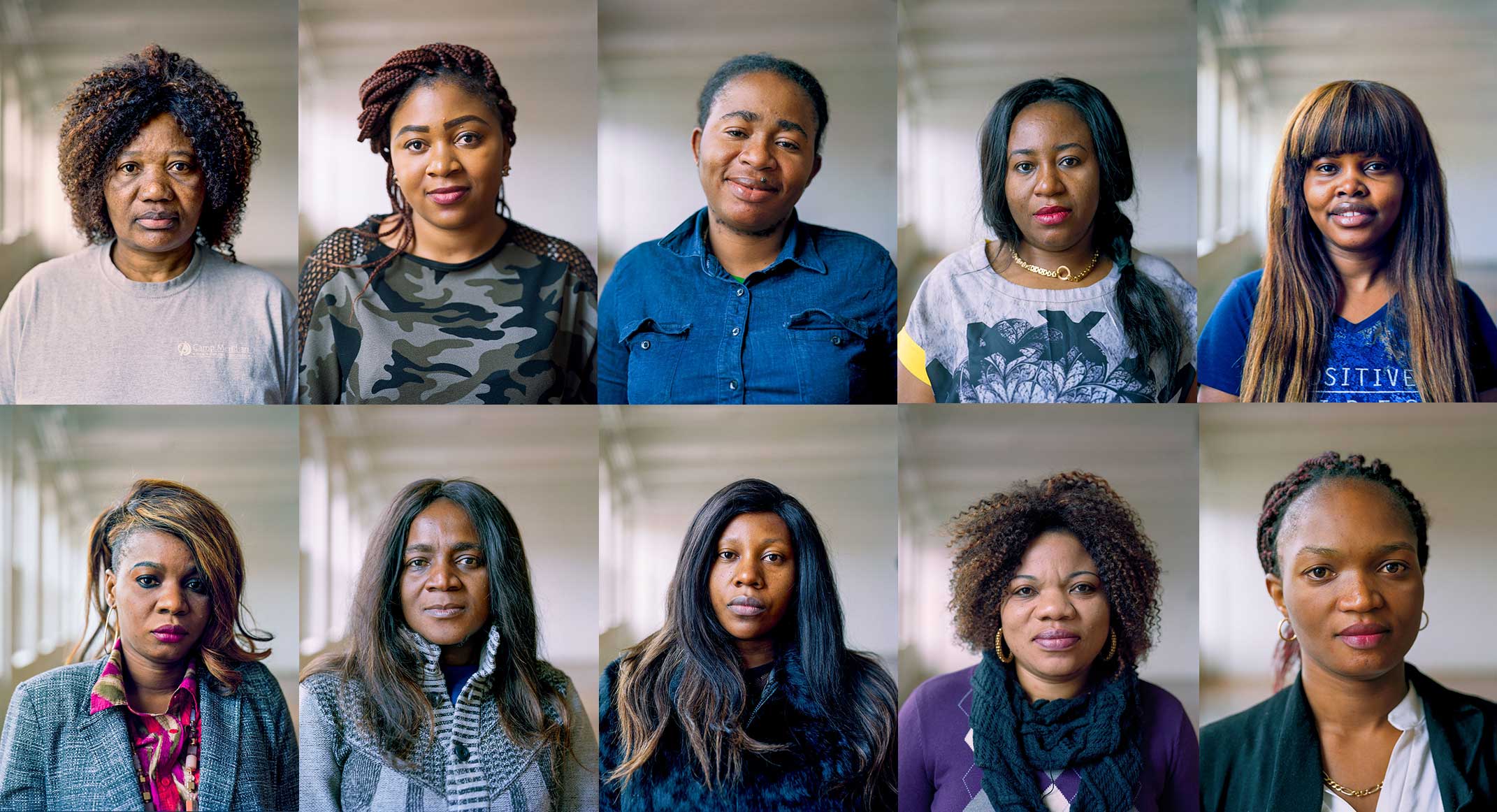
English: the key to moving forward
“The first thing we can do is make sure new Americans have good English language skills because without that they are lost,” says Roger Katz, a former state Republican senator from Augusta who has advocated for increasing vocational resources for immigrants.
“So, whether it’s delivering those services through adult education programs or through other (programs), the point is that we need to make sure that new Americans have access to good English skills. And that can also be done in the workplace, such as at Barber Foods (a Portland company that has offered on-site English classes). We need to meet these workers where they are and design the program to focus on language that is important in that workplace.”
Most of the language training in Maine occurs through adult education programs, where demand in Lewiston and Portland outstrips availability. These courses are popular and crowded, with waiting lists.
“We currently have 45 ESOL (English for speakers of other languages) classes with 93 students on a waiting list at the beginning of the current semester,” says St. Onge. “The waiting list is reduced as no-shows are dropped and students on the list are added.”
RELATED STORY: Seamlessly working
She notes that a bigger challenge is that classes are large. Some have as many as 30 students, which is not ideal for language instruction. In fiscal year 2018, 1,749 students took ESOL classes in Portland.
Demand also exceeds capacity in Lewiston, where Grant says that there was a waiting list for 10 students for the latest semester. Students awaiting a spot can still access the computer learning lab and conversation classes taught by volunteers. In 2018, 481 students took English language classes in Lewiston.
Efforts to provide work-specific language programs, such as through Lewiston’s construction program or through a program for seamstresses in Westbrook, also are underway in Maine.
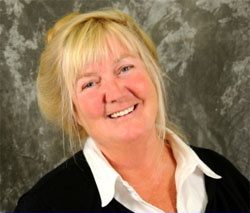
Dory Waxman, a former member of the Portland City Council and a veteran clothing maker, has established a free sewing school for training fabric stitchers in her classroom at the Dana Warp Mill in Westbrook. Her popular program, Common Threads of Maine, integrates sewing-specific language instruction. With trained seamstresses in demand, graduates of her program are having success finding jobs in Lewiston, Biddeford, and Greater Portland.
“We have trained 74 stitchers (since classes began in 2015). Of those, we know of seven not working in Maine. Four other students we’ve lost contact with – although we know one of them is working in a sewing shop in Lexington, Ky.,” says Waxman, who has funded the program herself and through small grants and is establishing a nonprofit that would provide more funding options via foundations and other donors. “We can’t put them out fast enough.”
Her students attend classes five days a week. During a recent session, students worked their way through the parts of a sewing machine, learning the English word for each. Students in a recent class came from South Africa, Angola, Afghanistan and Democratic Republic of Congo. Graduates have gone to work at Hyperlite Mountain Gear, angelrox and Sea Bags Maine, as well as at American Roots, another company housed in the Dana Warp Mill that makes fleece clothing and is co-owned by Waxman’s son Ben. The current class of 12 will graduate this month.
“English is critical to moving forward,” says Ben Waxman, explaining that it’s a matter of shop safety as well as efficiency for his business, which had more than $1.4 million in sales in 2018.
At American Roots, Anaam Jabbir, a refugee from Iraq who originally settled in Georgia with her family before moving to Maine, agrees that English is the most important skill immigrants must acquire. Unable to resume her work as a teacher because her degree earned in Iraq was not accepted in the United States, Jabbir found her way to the sewing program after seeing a poster at Portland Adult Ed.
“You just have to learn English,” she says. “It’s important to find a workplace training program and to take advantage of it. My skills have grown here, and I like working with the many immigrants from many countries.”
More-educated immigrants face other barriers
For immigrants who were professionals in their native countries, the key obstacle to working in their fields is credentialing. Biochemists, architects, doctors, nurses, lawyers and others face an uphill battle in obtaining the credentials they need to work in their chosen professions. Obtaining transcripts, getting credit for international coursework and degrees, and navigating the process of obtaining credentials can be incredibly complicated.
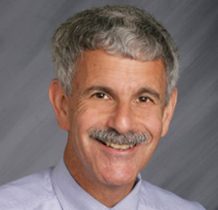
Katz captures the problem: “Many immigrants come to this country with significant experience and credentials in their own countries. The classic example is the Iraqi cab driver in Portland who was a physician in his own country. Whether it’s a doctor or a nurse or an architect or an attorney. The question is how can we work with them to get them appropriately credentialed in the United States and get them the additional training and qualification they need to be able to practice their native professions here in America.”
The first step in addressing the credentialing process for different professions is to pinpoint where immigrants fit within each profession’s basic qualifications, often dictated by professional boards that follow national guidelines.
Producing roadmaps for credentialing has been a top priority for Portland’s New Mainers Resource Center. The state- and grant-funded center, which doesn’t receive money from the city, provides services such as job readiness skills, networking opportunities and workshops for immigrants who are professionals.
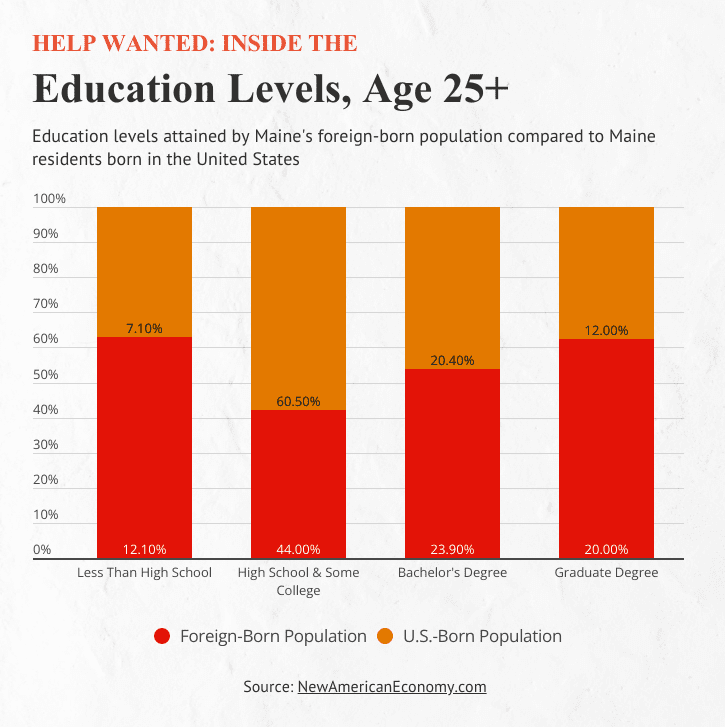
To address the credentialing mazes, Sally Sutton, the resource center’s program coordinator, and her team have created a series of guides that help immigrants navigate the roads to practicing their professions in the United States. Currently, there are guides for engineers, lawyers, accountants, nurses, physicians and teachers.
“Each guide is about 12 to 16 pages and shows a path to certification,” Sutton explains. “They show the documents that are needed; the (level of) English needed; what tests are needed and more. If you taught somewhere else, it shows what you need here, these are the courses and where to take the courses.”
Sutton makes clear that she’s not advocating for relaxing standards: “We are not questioning standards. We just want to help with understanding the standards and the path to credentials.”
The goal, she explains, is to help immigrants find work within their professions so that they “can take advantage of their skills, and not just find a survival job. They want a livable wage where they are working in a position related to their (training) and that they have opportunities for advancement.”
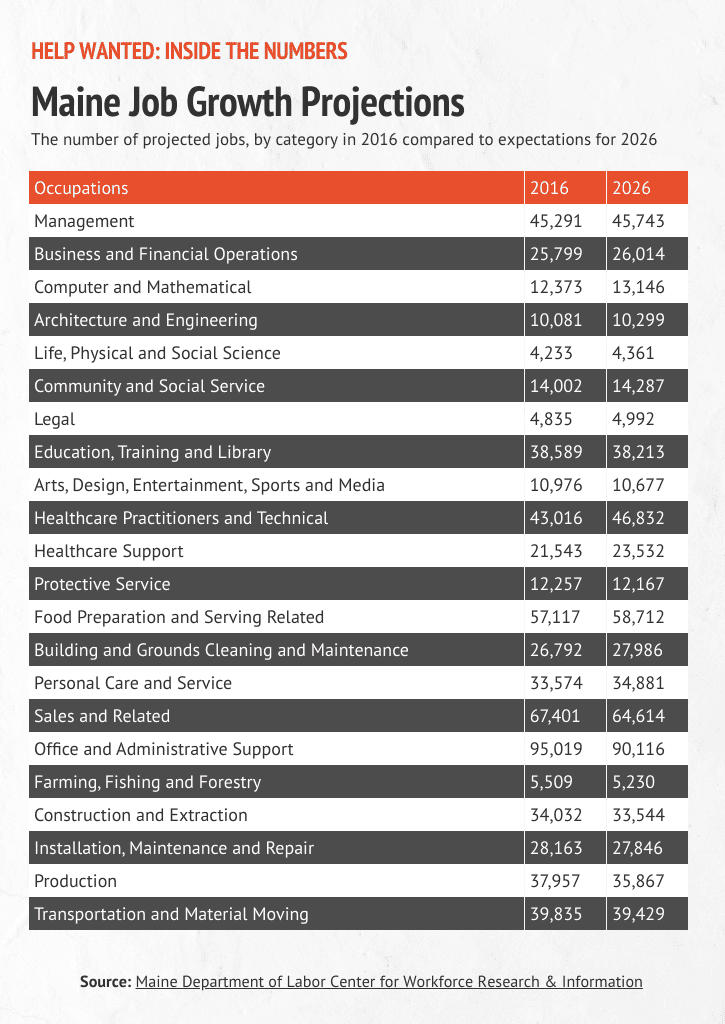
The inability to find work in professions they’ve trained for is frustrating for many immigrants.
Participants in the Portland Empowered Program, which fosters connections between immigrant parents and students with Portland public schools, recently were brought together by Portland City Councilor Pious Ali. Gathered around a conference table at the University of Southern Maine in Portland, immigrants shared their experiences and frustrations. Attendees included Westbrook’s Rafael Kakhuba, an experienced architect from Republic of Congo, who arrived in Maine less than two years ago, and Portland’s Micky Bondo, a former biochemist in Democratic Republic of Congo who came to the United States in 1996 and moved to Portland in 2009.
Kakhuba, who is taking English classes through adult education and construction classes through Southern Maine Community College, says his major obstacle is with English. With “autoCAD (engineering design software), it’s the same here as in Angola,“ he says. “It’s just a different language and measurement system (metric vs. English).”
Ali points out that Kakhuba is more qualified in certain aspects of design than some of his instructors. Kakhuba, who owned a construction company with 20 employees and also taught in Angola, says he hopes eventually to work in his field, where he has 25 years of experience. To achieve that, he’ll need to meet the professional requirements for being licensed as an architect in Maine, a complex process that includes evaluation of his education in Angola.
Bondo, a cofounder of In Her Presence, a nonprofit that supports the rights of immigrant women, wasn’t able to restart her career as a medical researcher in the United States because of credentialing and education barriers, and that’s been painful for her: “My hands shake when I go to the doctor and see people in the lab because I am no longer able to do the work that I was trained to do.”
Success is attainable
There are success stories amid the frustrations. Arsene Sebaziga, a 41-year-old asylee from Democratic Republic of Congo, turned to Portland’s New Mainers Resource Center for help in navigating his way to an engineering position with the Maine Department of Transportation.
Sebaziga, who speaks six languages and worked on port construction in Africa, improved his English skills at the center and worked with Sutton on credentialing, resume writing and job preparation.
He got a job with MDOT as an assistant tech and has since become an assistant engineer who helps oversee road-work projects.
“I did whatever I could to learn,” he says. “I took online classes to accelerate my language learning. After one year in 2015, Sally Sutton started the New Mainers Resource Center. I approached her, and we worked together. My language got better, and I told her I wanted to work in my field. Most of the immigrants here went to college, but in Africa, so they end up working in home healthcare. Instead, I said to myself that I will at least try to work in my field. That’s want I wanted because I didn’t go to university for six years for nothing. I can do what they do here.”

Sebaziga says his long-term goal is to secure his civil engineering license and open his own company. Because of a health issue in his family, he made a decision earlier this year to move his family to Houston, where he says there are many opportunities for engineers.
Despite the success stories, the reality is that practicing within their professions may not be an option for many immigrants because of degrees not being recognized or supplemental educational requirements being too onerous, in terms of time and expense.
In such cases, professionals may be able to transfer skills into related work that doesn’t have such steep credentialing requirements.
For example, Sutton says, some former doctors have become physician assistants, which is a relatively quick path compared to reacquiring credentials to become a physician.
Bondo agrees with Sutton about tapping into the skills of professionals, explaining that potential employers should understand that Maine has many immigrants with professional degrees who have transferable expertise beyond their primary professions. Even if someone can’t be credentialed, they may have project management skills. For example, if Kakhuba can’t get accreditation as an architect, he’d still have management skills learned as the owner of his own construction company.
A lot of knowledge and training is going to waste in Maine, Bondo says: “Businesses should know this educated population has other skills that can help businesses grow.”
Data backs up Bondo’s observations. According to the Migration Policy Institute, 24 percent of college-educated, foreign-born Mainers are underemployed. This compares to 20 percent of the U.S. born population in Maine.
Cultural divides present another set of challenges
The final major barrier is the cultural gap that employers and employees must navigate.
“Even with the mastery of a language, coming from a foreign country you come with a different set of values,” says John Dorrer, former director of Maine’s Center for Workforce Research and Information and co-author of Coastal Enterprises, Inc.’s 2016 report on the role of immigrants in the Maine workforce. “Showing up for work, being late, getting along with your supervisor, asking questions, I’m not sure we are doing enough when we provide people with basic language skills in adding to the mix the cultural know-how and employability skills, vocational skills to function effectively in the labor market.”
Refugees who have spent years in camps can have an especially difficult cultural transition.
“For some people coming from camps, the barriers are that they may never have had a job with a salary before,” says Hannah DeAngelis, director of Catholic Charities Maine’s Refugee and Immigration Services. “So, it’s adapting to U.S. culture, with things like getting a paycheck, using appliances. It is some pretty basic cultural orientation skills, and, of course, language skills. Many of our clients have had pretty limited education opportunities.”
Sebaziga, the former MDOT engineer, sees a difference in workforce cultures.
“To be honest, in the U.S., people are very serious,” he says. “In Africa, they are a little bit less serious about what they do. There’s more corruption, not following the rules. It’s been there for a long time. But I hope it will change for the next generation. The culture of America is hard workers. It is an adjustment for many.”
While some cultural training is available through adult education and Portland’s resource center for potential employees, there’s also room for employers to adapt themselves.
“The biggest hurdle is building trust,” says Brian Skoczenski, chief operations officer of Ready Seafood, where 50-60 percent of employees are immigrants. “It sounds simple, but the more trust that we get, the more we understand what these new Mainers have gone through to get here. Once you find common ground, it doesn’t matter where you are from or who you are. They have the same issues – babysitters, car trouble. It’s the same.”
For Ben Waxman of American Roots one of the keys to adapting is having patience in a workplace that has employees from Iraq, Ethiopia, Egypt, Congo, Angola, Morocco and Cambodia – and where six languages are spoken.
“You need to know where someone is coming from who is here from another country,” says Waxman. “You have to understand the cultures. We have a meditation/prayer room, and there are certain cultural things that we have figured out, such as the need for them to socialize after we come off a large break such as winter/Christmas. Instead of starting up right out of the gate with a ton of work to do as I wanted, the workforce was upset that they didn’t have a chance to reconnect with each other for a few minutes at the start of the shift. They believe in family, family, family, and they view this place as family. So, if they haven’t seen each other in a while, they want to talk. We adjusted.”
Zaid A., an immigrant in the United States via a “fiancé visa,” says that immigrants need to go the extra mile in making their case and overcoming the cultural divide. (Fiancé visas, otherwise known as K-1 visas, are issued to immigrants who will be marrying a U.S. citizen within 90 days of entering the U.S.)
“If you don’t show off yourself, they won’t know about you,” says Portland’s Zaid, an Iraqi-trained biochemist who now teaches chemistry at the University of New England. “Even if you are a native in the U.S., it’s competitive. There are too many people like you. It doesn’t mean because you are an immigrant that you won’t succeed. There are professionals who are working as handlers at L.L. Bean. They are frustrated. It’s not easy to compete. We understand that we come from different colleges, education – everything. You just have to do your best and work hard to fill the gap. I applied for more than 100 jobs. It was a bit depressing. But if you have goals and work, you will succeed.”







